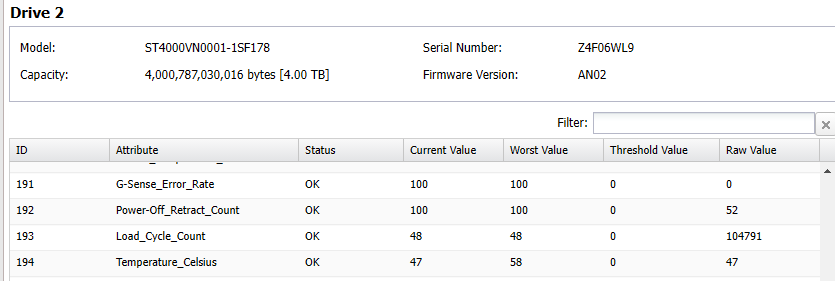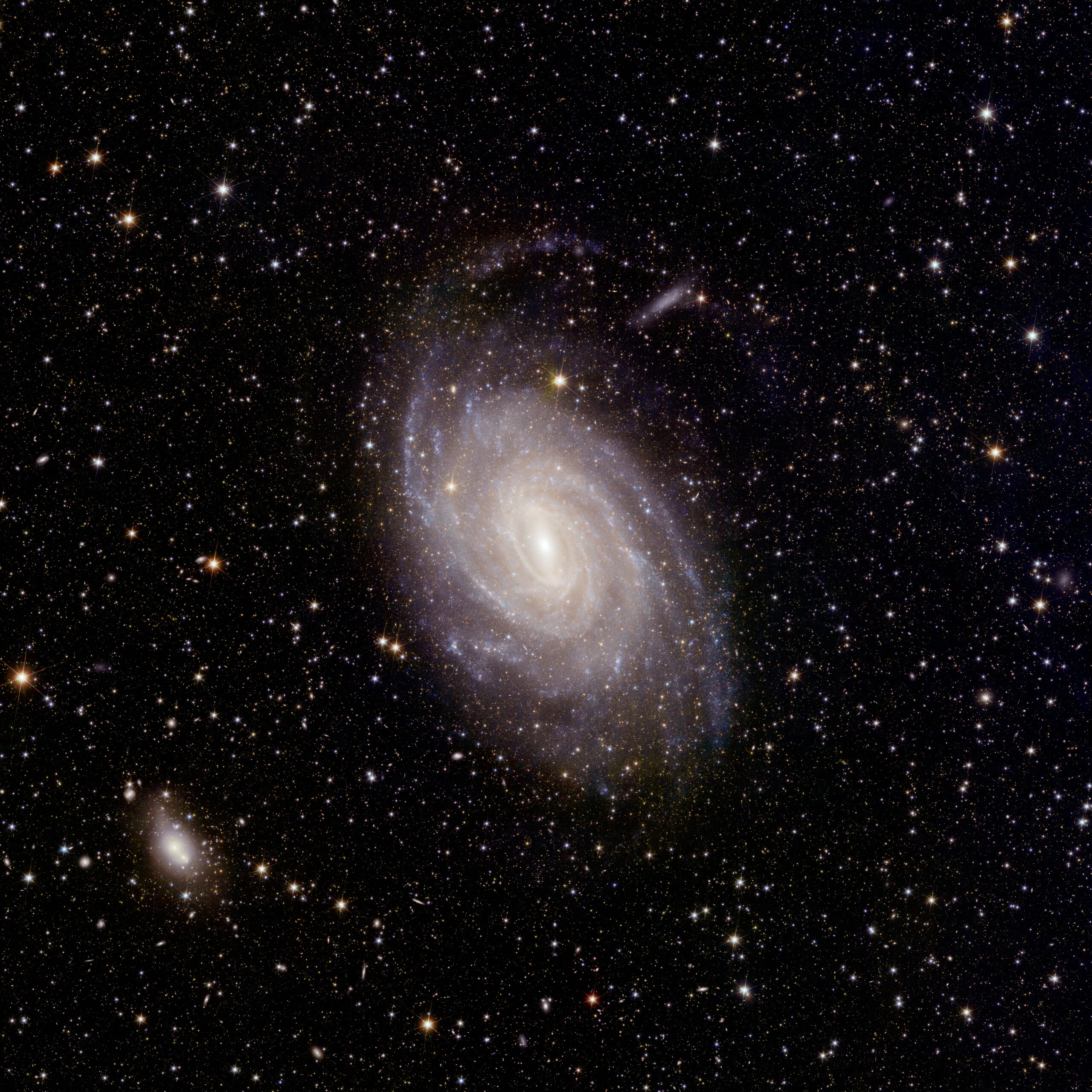|
|
Congratulations, I’ve done no page ranking, have paid google nothing, did not answer the door when bing rang, and ignored their wailing begging from my porch, eventually getting a PFA from them, and yet here you are.
This is my site of collected links and data I’ve deemed too important (to me) to trust to the originator to keep available. The site itself has risen from the ashes of a not-backed-up-free-hosting account that actually survived for over a decade. There is a lot to wayback through, so for some time you will see both fresh and ancient content added in a truly random fashion. Go ahead, base your RNG on it. Ok, maybe don’t.
Don’t forget about this one, Craig:
Arcade
OpenSpeedTest.com has all of your Internet Speed Test needs covered! They have needs covered that you don’t even know you have. Also, they have tools for measuring speeds on your own networks, wired and wifi. An impressive amount of polish here.
Source: Free and Open-Source Self-Hosted HTML5 SpeedTest
Looks like Harvard is sticking it to The Baboon by giving away free knowledge. Harvard has committed to making many (more) courses available for free. Yep, that is right, FREE. I have not looked into the details this time around, but in the recent past Harvard allowed Audit level attendance to courses gratis, with certificates of completion available for a modest fee ($200 for CS50). My understanding at this time is Harvard intends to offer entire degree curriculums. As of May 2025, 134 courses are offered.
Source: Free Courses | Harvard University
If you are behind a corporate type firewall, here are the steps I had to take to get the firewalls certificate into and working with LMDE 6.
To install a .crt (certificate) file in LMDE (and Debian-based systems), you’ll need to add it to the system’s trusted root certificates. This involves copying the certificate to a designated directory and updating the certificate store. Here’s a step-by-step guide:
1. Locate and Copy the Certificate: Determine the location of your .crt file (e.g., your downloads folder, or a local file path). Create a directory within /usr/local/share/ca-certificates/ if it doesn’t exist. For example, you can create a directory for a specific certificate authority: sudo mkdir /usr/local/share/ca-certificates/my-custom-ca. Copy the .crt file to this directory: sudo cp /usr/local/share/ca-certificates/my-custom-ca/.
2. Update the Certificate Store: Use the update-ca-certificates command to update the system’s trusted certificate store: sudo update-ca-certificates. This command will process the new certificate and add it to the system’s trusted list.
If you are using a non-standard directory, you may need to configure the ca-certificates.conf file. You can use the dpkg-reconfigure ca-certificates command to do this interactively, or use the –fresh option with update-ca-certificates for non-interactive configuration.
3. (Optional) Convert .cer to .crt: If you have a .cer file instead of a .crt file, you can convert it using openssl: openssl x509 -inform DER -in cert_name.cer -out cert_name.crt.
4. Restart Services (if needed): If you are installing a certificate for a specific application or service (e.g., a web server), you may need to restart that service for the changes to take effect. Important Notes: The update-ca-certificates command typically looks for certificates in /usr/local/share/ca-certificates/ and its subdirectories. However, some versions of Debian might use /usr/share/ca-certificates/.
Source: howto install crt in lmde – Google Search
SWEET! A official way to block Windows Updates. Although I still will be using WUB, this will be a handy tool for sure. Thanks, Microsoft!
“After installing the updates listed in the Security Updates table for your operating system, a new %systemdrive%\inetpub folder will be created on your device,” confirmed Microsoft.”This folder should not be deleted regardless of whether Internet Information Services (IIS) is active on the target device. This behavior is part of changes that increase protection and does not require any action from IT admins and end users.”However, cybersecurity expert Kevin Beaumont has demonstrated that this folder can be abused to prevent further Windows updates from being installed if it is created a certain way.”I’ve discovered this fix introduces a denial of service vulnerability in the Windows servicing stack that allows non-admin users to stop all future Windows security updates,” Kevin Beaumont.In a new report, Beaumont says that Windows users, even those without administrative privileges, can create a junction between C:\inetpub and a Windows file, like C:\windows\system32\notepad.exe using the following command.
mklink /j c:\inetpub c:\windows\system32\notepad.exe
A Windows junction is a special type of folder that redirects access to another folder on the same or another drive, making it appear as though the content exists in both locations.When asked why this junction is preventing the update from being installed, Beaumont says he believes it’s because the update expects a folder rather than a file.”It works with basically any file, I think it’s because the servicing stack expects c:\inetpub to be a directory – but mklink allows you to make a junction to a file,” Beaumont told BleepingComputer.
Source: Windows “inetpub” security fix can be abused to block future updates
Google is so powerful that it “hides” other search systems from us. We just don’t know the existence of most of them…Meanwhile, there are still a huge number of excellent searchers in the world who specialize in books, science, other valuable information.
Keep a list of sites you never heard of!
www.refseek.com – Academic Resource Search. More than a billion sources: encyclopedia, monographies, magazines.
www.worldcat.org – a search for the contents of 20 thousand worldwide libraries. Find out where lies the nearest rare book you need.
https://link.springer.com – access to more than 10 million scientific documents: books, articles, research protocols.
www.bioline.org.br is a library of scientific bioscience journals published in developing countries.
http://repec.org – volunteers from 102 countries have collected almost 4 million publications on economics and related science.
www.science.gov is an American state search engine on 2200+ scientific sites. More than 200 million articles are indexed.
www.base-search.net is one of the most powerful researches on academic studies texts. More than 100 million scientific documents, 70% of them are free!
So many great tools! Always can use a reminder to check it out.
Source: Microsoft PowerToys Cheat Sheet: How to Get It, and What Can It Do?
<TLDR> Use a recovery environment to re-install grub! </TLDR>
I have been getting the dreaded “No Operating System” when restoring a VMware guest using Veeam. Here is my story of how I fixed it.
I have two old SLES guests running on VMware 7. I use Veeam to back these systems up. One of my SLES guests has several virtual hard drives, which shouldn’t be a problem, but is. It will not start on restore from Veeam. The only way I’ve had consistent success is by (s)FTP and making a copy of the VMware folder of the guest, then using VMware’s datastore browser and uploading the files (also can use sFTP) and then adding a existing guest. Not a terrible work around, but the guest must be off to get it’s files. One can not do this with a hot guest.
After years of using the FTP solution, I decided to get to the bottom of this.
The first thing I noticed was the second virtual disk was being used as the primary disk in the VMware configuration. Odd. This particular guest has two drives, the primary disk at 68gb and the secondary at 66gb. The secondary disk has no partitions and is only defined at the hardware level – it is not mounted. When backing up, everything looks good – the larger disk is shown as primary. When restoring, everything continues to look good until you finish the restore and look at the machine in VMware. Now it shows the 66gb disk as primary!! Booting results in “No Operating System” being shown.
So I tried a few methods of swapping positions – simply editing the guest configuration and deleting both drives and repopulating them with existing drives pointing to the correct files – no effect same message of “No OS”. I also tried some fancy renaming of the .vmdk files… all no luck. Still getting the “No Operating System” when booting no matter what I tried.
So I suspected the virtual controllers may be the culprit – I am moving from a real ‘server’ with RAID and SAS drives to a simple i5 box I have at home, and VMware cares about SCSI/ISA Controllers. Any and all muckery here was wasted effort and added to my deepening dread that I had a major IT asset which I did not have confidence in being able to recover in case of a disaster.
After many attempts at editing the Virtual Machine – I tried modifying the .vmx file directly, copying and pasting sections from a working guest. As expected, this by in large broke the machine outright far more than fixed it. After only a couple hours it was clear this was not a path to success.
After a rare good nights sleep I decided to approach the situation differently. I have been working from the point of view that the guest VM is broken… not really listening to what it was telling me.. “No Operating System”. It wasn’t the guest, it was the OS! Grub was clobbered!
Fortunately I had a SLES10.1 .iso (same vintage is always best!), and was able to boot into a recovery session on the guest.
$fdisk -l showed that the swap partition was positioned in front of the data partition… it has been trying to boot the swap partition and finding nothing there!!
So, the fix:
- fdisk -l to show the devices, noting the bootable partition is at (in my case) /dev/sda2
- mount /dev/sda2 /mnt
- cat /mnt/etc/fstab and note /dev/sda2 mounting to “/” (good!)
- grub-install –root-directory=/mnt /dev/sda
This reinstalls grub so that it looks to the second partition to boot from. Reboot and presto – it works!!
I tried this with SLES15 but no luck – that uses grub2. Tried a old SystemRescueCD.iso and had success using it’s version of grub. Seems pretty resilient.
A pretty straight forward fix, once I was on the right track! So hard to see the right track when you are working in a team of one and deep in your box.
Handy guide I followed:
Source: How to reinstall the GRUB boot loader | Support | SUSE
How to reinstall the GRUB boot loader _ Support _ SUSE (local copy)
4tb Seagate HD running in a 2 bay Buffalo desktop NAS running at 136f!

in a 60 degree room. Great, now I need to monitor them?
When used with an SSD, UAS considerably increases the random read and write speeds compared to BOT. To see if UAS is being used by Windows, do the following.
- Press Win + X keys together on the keyboard and click Device Manager.
- Expand the “Storage Controllers” node and see if it has a “USB Attached SCSI (UAS) Mass Storage Device” listed. If not, then expand “Universal Serial Bus controllers” tree node in Device Manager.
- Double click on the “USB Mass Storage Device” for which you wish to check this.
- Go to the Driver tab and click the Driver Details button. If it says USBSTOR.sys, then it means Windows is using the older Bulk-Only Transport Protocol with your USB device. If it says UASPStor.sys, then it means UAS Protocol is in use.
Source: Check if your USB 3.0 device supports USB Attached SCSI (UAS) Protocol
So back in August there was a flurry of activity around this subject. In the time since, we have seen MS capitulate on the hardware requirement, now stating that your incompatible hardware ‘may’ not receive updates in the future.
I am still undecided at this time – mostly because Microsoft has pissed me off one too many times and I have lost faith in them. They are liars. They are unfaithful. They are drive by greed and are insecure as to what they stand for.
These traits do not contribute to a supportive foundation – whatever they build today will fall tomorrow as they have no belief in their own work. Windows 11 is the best evidence of these statements as possible.
Additionally, it appears that Windows 10 will in fact get updates for quite some time – MS is offering paid support for at least 3 years, and as we can see with their continued support of Windows 7 in 2023, they likely will continue to release critical patches for years to come.
0Patch has already publicly stated that they will offer patches for Windows 10 until at least 2030.
On top of all of this, I am unsure as to why anyone needs to patch anything anyway. Perhaps browsers, when critical faults are addressed, but at a OS level I have serious questions as to why one should update at all. With a basic firewall and trusted local users, some common sense regarding what you click on and download, I fail to see the need for updating. In fact with as rushed and haphazard as Microsoft’s updates are, applying updates immediately after release is a foolhardy practice and not recommended by most industry pros.
I have several Windows 10 systems on my home network that do not receive updates (for years now) and they are just fine.
The article linked below has some smart comments, I’ll post a few of the links suggested within, but give it a read.
Source: Windows 10 Support ends in exactly 1 year – here are your options – gHacks Tech News
https://www.0patch.com/pricing.html
https://massgrave.dev/
https://quad9.net/
https://safing.io/features/
If you have the means, then by all means block these 241 file extensions from your incoming email. I have provided both a flat text file of the extensions and a formatted text file for Barracuda Email Gateway Defense. Once you bulk add, you can easily remove any specific extensions you want to allow through.
file extensions to block
barracuda file extensions to block
SDR is the new HAM, and here is a great way to get deep into it.
Source: Pi-Pico RX – Breadboard Version — 101 Things 0.1 documentation
http://www.darlingtoninn.com/
Not nearly enough Transylvanian-Hungarian restaurants out there – and this one is kinda close!

At a certain age, one falls for trains again.
Source: HawkinsRails – Amtrak’s Pennsylvanian
|
Categories
Archives
Comments
|



